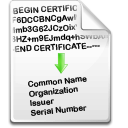

There’s many more output, like the intermediate CA certificates, the raw certificates (encoded) and more information on the ciphers used to negotiate with the remote server. This tool will decode a PEM/DER encoded SSL certificate and display the contents in a human-readable format. Issuer=/C=BE/O=GlobalSign nv-sa/CN=AlphaSSL CA - SHA256 - G2 NOTE: Salesforce trusts only root certificate authority. Subject=/C=BE/OU=Domain Control Validated/CN=ma.ttias.be In other words, in this scenario self-signed certificates are not allowed to be used by the target host. $ openssl s_client -showcerts -connect ma.ttias.be:443 This will connect to the host ma.ttias.be on port 443 and show the certificate. To connect to a remote host and retrieve the public key of the SSL certificate, use the following command. You may want to monitor the validity of an SSL certificate from a remote server, without having the certificate.crt text file locally on your server? You can use the same openssl for that. Read the SSL Certificate information from a remote server

The openssl tools are a must-have when working with certificates on your Linux server. Subject: C=BE, OU=Domain Control Validated, CN=ma.ttias.be Issuer: C=BE, O=GlobalSign nv-sa, CN=AlphaSSL CA - SHA256 - G2 Signature Algorithm: sha256WithRSAEncryption This online service decodes your x509 SSL certificate and verifies that your certificate is valid and displays the information held.

$ openssl x509 -text -noout -in certificate.crt Here’s what it looks like for my own certificate. It will display the SSL certificate output like expiration date, common name, issuer, …

However, you can decrypt that certificate to a more readable form with the openssl tool. MIIEzTCCA7WgAwIBAgISESHAjlbjcoBHxBYXS12oY6VjMA0GCSqGSIb3DQEBCwUAĬzgXBhDR3themzPx4jwx2ckNFpNDK/6yQgrKaHTewAAj If you have your certificate file available to you on the server, you can read the contents with the openssl client tools.īy default, your certificate will look like this. Read the SSL Certificate information from a text-file at the CLI
#Decode ssl certificate how to
Set an extension for a pending certificate request.This guide will show you how to read the SSL Certificate Information from a text-file on your server or from a remote server by connecting to it with the OpenSSL client. For example: where the \n sequence is converted to a newline separator.


 0 kommentar(er)
0 kommentar(er)
